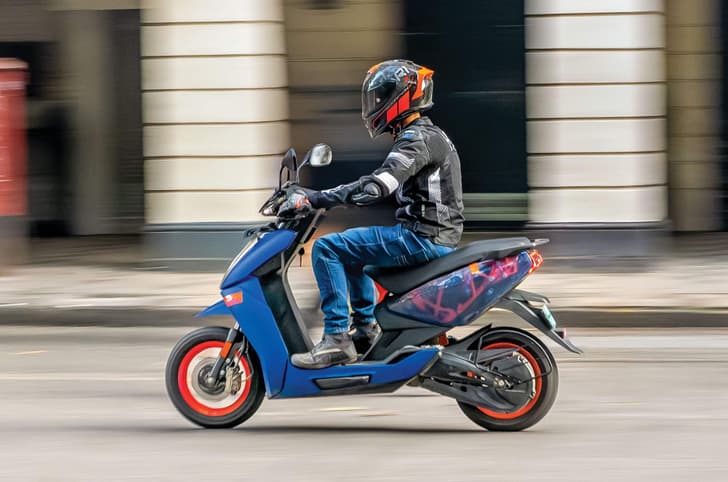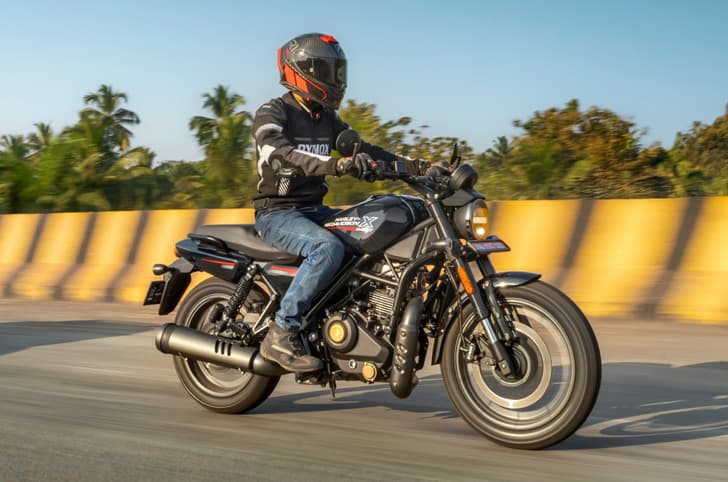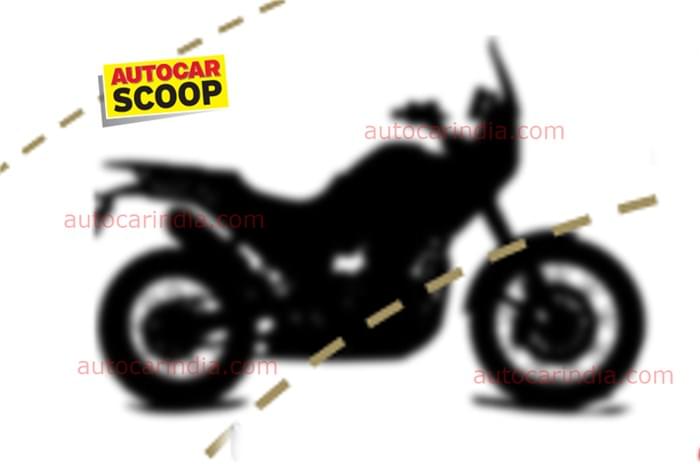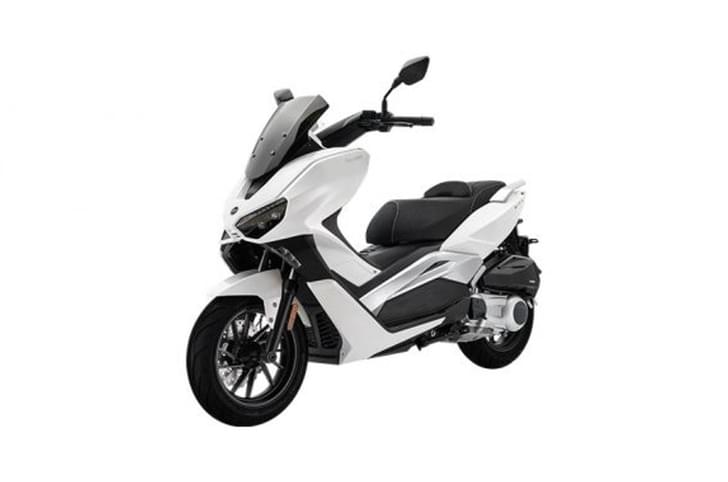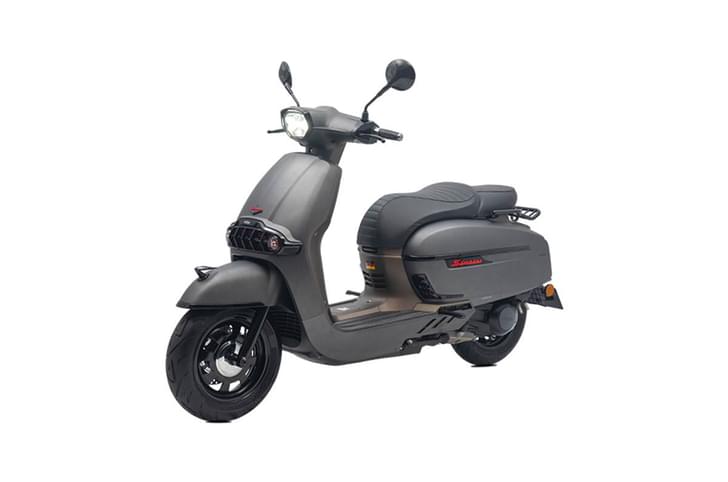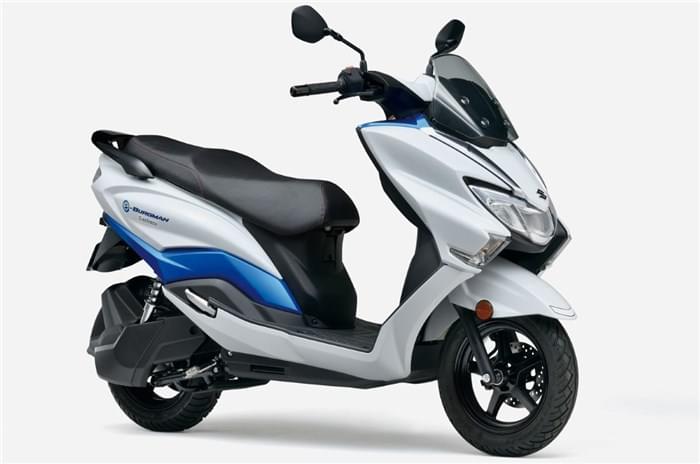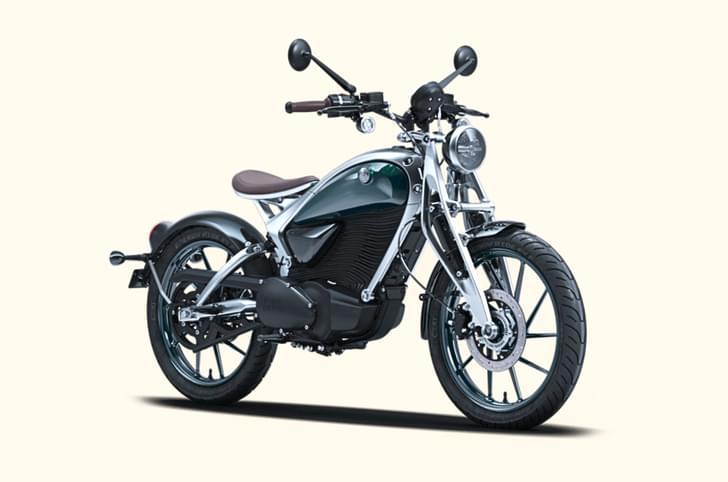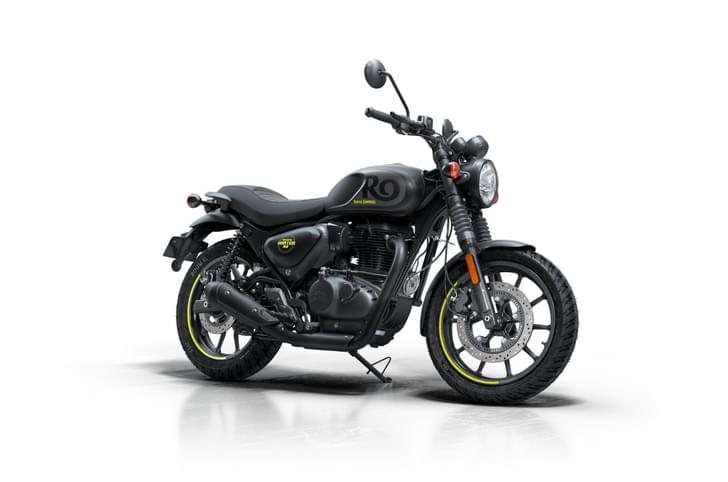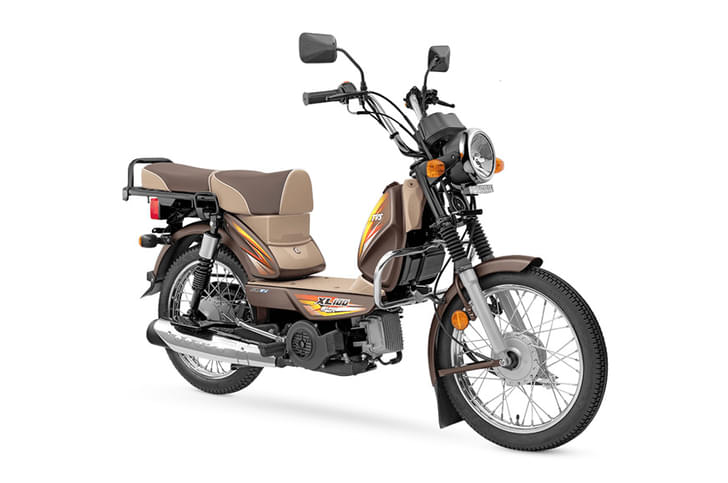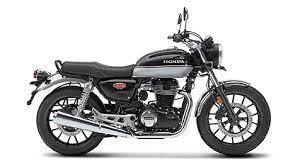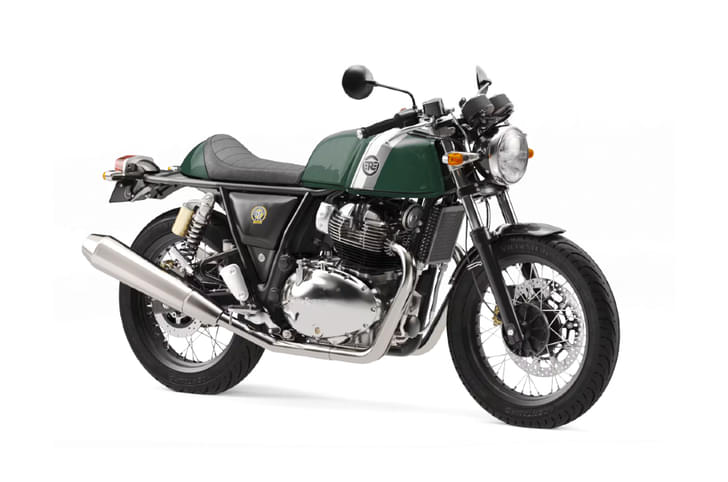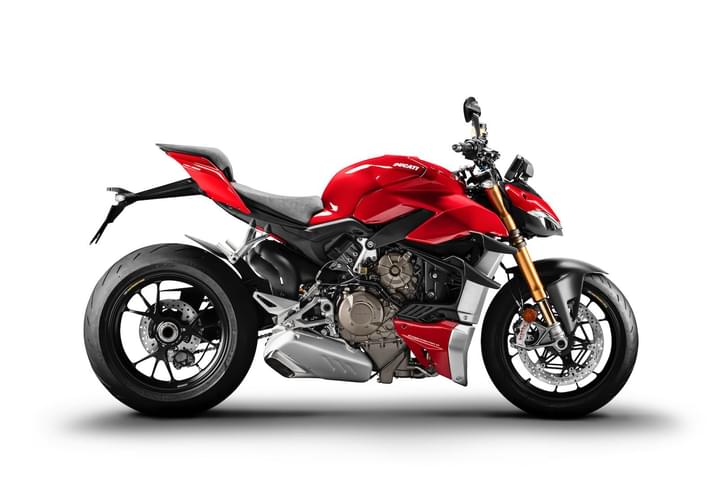It is quite reasonable to say that the Royal Enfield 650 twins have been the most eagerly anticipated Indian motorcycles of 2018. It’s been a long wait, but we’ve finally spent a day aboard the Interceptor 650 today and I’ll cut straight to the point - here’s what the bike is like.
Clean design
The Interceptor makes a great first impression when you catch sight of it. This is a clean, classic design that is undeniably handsome, but not particularly unique in any manner. Royal Enfield has requested us to use the hashtag #ridepure in our social coverage of the new twins, and you can see that in the design. The intention here is for an honest, uncomplicated design and you’ve got a straightforward ‘standard’ motorcycle with a round headlamp, a well-shaped fuel tank with chunky RE logos and a long, flat seat. Royal Enfield will sell numerous colours and graphic schemes for, both, the Interceptor and the Conti, but the differences lie in only in the fuel tanks. The quarter panel under the seat remains black with the logo of the motorcycle and the rest of the bike is pretty much identical across both models. You could essentially just change the fuel tank, seat, handlebar and footpegs to convert your Interceptor into a Continental GT.
As a result of this utter straightforwardness, the big parallel-twin lurking in the double cradle frame plays a big role in the design of the motorcycle. Royal Enfield has taken liberal inspiration from its past for the design and has strived to keep organic rounded shapes as the theme. This is apparent in the shaping of the fins around the engine, the polished cam covers, intake and throttle body covers and, of course, the large, shiny cases that reside underneath. The exhausts also boast a lovely chrome finish.
The motorcycle is very well proportioned and I’m a fan of the angular indicators and brake lamps. The 18-inch wheels at the front and rear add to the classic design, but be aware that these tyres are neither tubeless nor radials. Happily, they are high quality Pirellis that will be sold in India as a well and we’ll get to how they perform later on. For now, I can tell you that the fat tyre brigade will not be happy with a tyre that’s as wide as the one on a Pulsar NS200. Having said that, the big dual exhaust pipes give this bike solid presence, even when viewed from the rear. They do stretch out quite wide at the ends though, so you want to keep that in mind while filtering through jammed traffic. Thankfully, small metal protectors keep your knees from accidentally meeting the hot engine especially when your feet are on the ground.
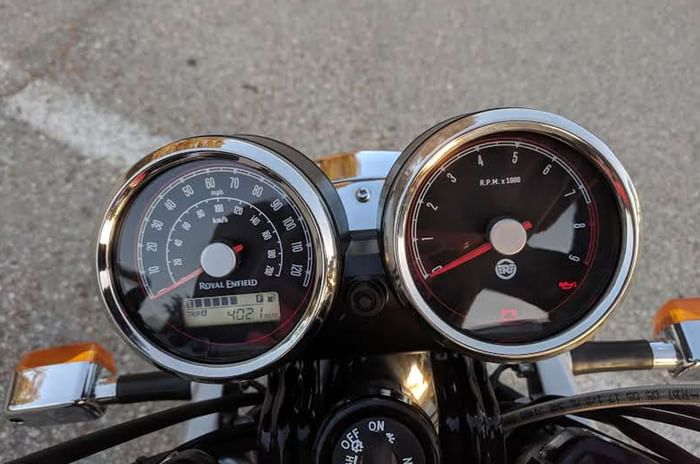
This isn’t one of those retro motorcycles with cheeky modern touches in the form of fancy LED lighting or a fully digital dash. But while the Royal Enfield twins are unapologetic about their old school design, effort has been made to ensure that there are no compromises in terms of practicality or comfort. So, you get a small digital readout in the twin-pod instruments that shows fuel level, two trips and the odometer. Beyond that, the analogue dials show how fast you’re going and how high your engine is revving. If pure motorcycling is what you’re after, you really can’t claim to need much more. Having said that, the Interceptor doesn't come with adjustable levers, and a clock and a gear position indicator would have been nice, too.
Packaging has been executed well and the oil cooler resides neatly between the two frame downtubes at the front. Wiring is hidden away quite effectively and while it’s not as incredibly clutter-free down there as on the latest modern classic Triumphs, it’s still a job well done.
This is a theme that continues with regards to fit and finish. Switchgear is quite simple, but nothing stands out as a negative and finish levels are at a level that you would be content with at the price the motorcycle is expected to retail at. There are few panels as such on the motorcycle, but everything seems fitted together well and the bike feels solid with no loose ends or rattles.
As handsome as the Interceptor is, the bigger intrigue lies in that brand new engine. Swing a leg over the bike and the seat height comes across as fairly friendly. This is a big bike and you’re made aware of its substantial weight (202kg without fuel) when you lift it off the stand. Thumb the starter button (there’s no kick-start) and you’ll be treated to a sound that you’ve never heard from a modern Royal Enfield. The 648cc parallel twin motor erupts into a deep, raspy and slightly off-beat pulse. It’s a smooth sound that’s a far cry from the characteristic slow thump that we’re used to and the engine responds quite eagerly to small blips of the throttle. It’s not quite as loud or bassy, but the sound is rather similar to that of the latest modern classic Triumphs; this is not surprising, given that both engines share a 270-degree firing order which is known to produce a characteristic off-beat rumble.
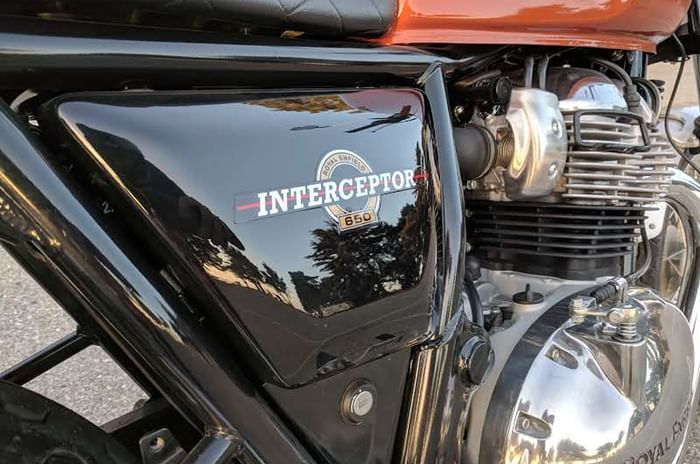
Low speed manners
Pulling out of our hotel in the chilly morning air, the clutch felt friendly. It's a slip-and-assist system which smoothens out downshifts and, as a result, effort required at the lever is reasonable; but it's not feather-light. After a couple of kilometers down the road, two things immediately stand out, even in the strict speed limits of urban Santa Cruz.
First, the 4 valve/cyl engine is really, really smooth. Over the day, I discovered that there is a hint of a murmur that appears in the bar and pegs at certain revs, but this is more of a reminder that there's an engine alive between the legs than a form of discomfort in any way. These are effectively, as Royal Enfield likes to put it, good vibrations. Second, the fueling is really well-judged, and throttle response is smooth and friendly with no jerkiness. This makes the 650 really friendly to ride.
Power delivery and Performance
Adding to the easy riding nature is the oh-so-linear power delivery. The engine gets grumbly below 1,500rpm, but anything upwards of 2,000rpm arrives with a strong swell of torque. Power is progressively built above this, with a strong pull between 4,000 and 6,000rpm. The motor will rev all the way to over 7,000rpm, but things start to feel a little strained here and you'll quickly learn to surf the wave of torque that resides below.
What's really impressive here is the refinement of the motor at highway speeds. That 270-degree crank arrangement creates a likeable off-beat tenor to the exhaust note that's quite likeable. The all-important 100kph cruise is absolutely calm, at just over 4,000rpm. 120kph, at just under 5,000 rpm is still very relaxed and is sustainable all day long. Even 140kph creates no noticeable discomfort from the motor and the only challenge comes in facing the strong wind blast that accompanies such speeds. Give it space, and you should see the speedo needle edge to about 170kph.
Special mention goes to the 6-speed gearbox. It's very precise at all speeds and finding neutral is easy as well. The smooth action encouraged me to shift without the clutch almost all the time and I never faced a false neutral. Considering the existing RE stock, this is a huge improvement. And, despite a day of hard riding, neither the engine nor the gearbox seemed any worse for wear.
What's key to note here is that there's nothing at the affordable end of the Indian market that offers this brand of performance at the moment. Bikes like the KTM 390 Duke/RC or the Ninja 400 may be just as fast, perhaps even more so, but they all have peaky motors that need to be worked hard. The 650 parallel-twin, on the other hand, is beautifully relaxed and you could happily potter around at low city speeds or get aggressive on a fast and flowing road.
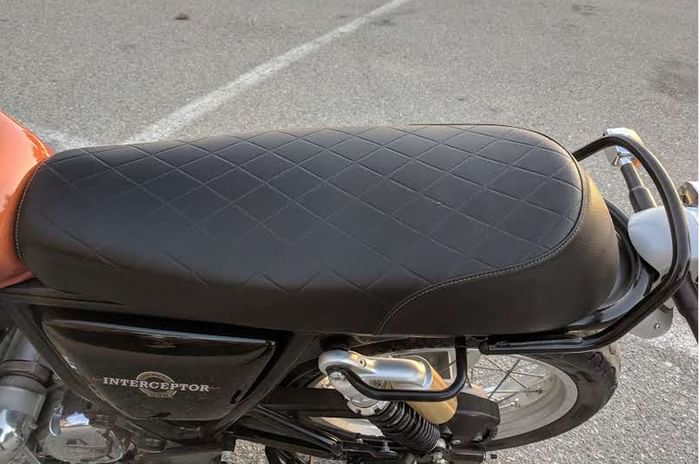
A new chassis
Both, the Interceptor 650 and the Continental GT 650, share a new double cradle chassis as well as the same suspension and brake set up. The 41mm fork and dual gas charged shock absorbers are made by Gabriel, while the braking system, which consists of a floating 320mm disc in the front a 240mm disc at the back is by Bybre. Dual-channel ABS is standard and there's no electronic wizardry in the form of traction control or riding modes.
The Interceptor has been set up to be a neutral, well behaved motorcycle. Suspension compliance at low speeds is quite good (the rear shocks are set at the lowest of five preload settings as stock) and the ride quality comes across as mildly firm, but comfortable. Riding it back home will reveal much more in this regard.
In California, though, we rode through long stretches of lovely winding roads and even though the pace wasn't flat out, it was quite brisk in some sections. Here, the Interceptor followed every command and never pulled any nasty surprises. I was impressed with the amount of cornering clearance on offer and never scraped the footpegs. Braking performance is perfectly up to the task as well, but it's not sportbike sharp. Even the suspension held up well and supported some pretty enthusiastic riding. Eventually, you get to the point where you start to want more suspension sophistication, braking performance and grip from the Pirelli Phantom Sportscomp tyres, but this arrives when the speeds are at a level that is seriously impressive for a machine like this. All considered, this is a well-honed chassis that perfectly complements the kind of performance the 650 engine has to offer. But that doesn't come as much of a surprise, because RE has already proved it can do a good chassis with the likes of the previous Conti GT and the Himalayan.
A couple of hours into the ride, I started to struggle with the quest to find negatives with this motorcycle. So far, the one issue I could find was that the front end starts to get a little light and flighty upwards of 120kph. It's not scary or intimidating, and the steering never threatens to go into a tankslapper, but you do feel it happening. How that tendency will pan out on our, ahem, imperfect roads is something to be seen.
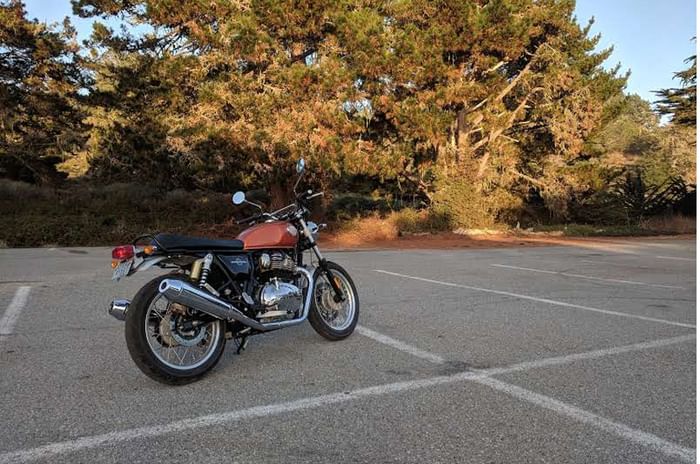
Conclusion
I arrived at the Royal Enfield 650 twins’ ride with rather high expectations and with a longing not to be let down. After day one with the Interceptor, it turns out that the motorcycle actually managed to exceed what I'd been hoping for. This is a well-built motorcycle that is easy, fast and most importantly, fun to ride. There's very little I can find fault with it at the moment, and the only thing that remains to be answered is how it will hold up in the long run and just how competitive the price will be. For now, colour me very impressed.
Royal Enfield will be revealing the USA prices shortly and we expect that the bike will go on sale in India soon, probably by November. The pricing will be competitive, disruptively so, even, and this applies across the world, as the company finally has a product that will allow them to break into the mainstream motorcycling scene in mature markets. We ride the new Continental GT 650 tomorrow, so look out for that review coming out soon as well.








